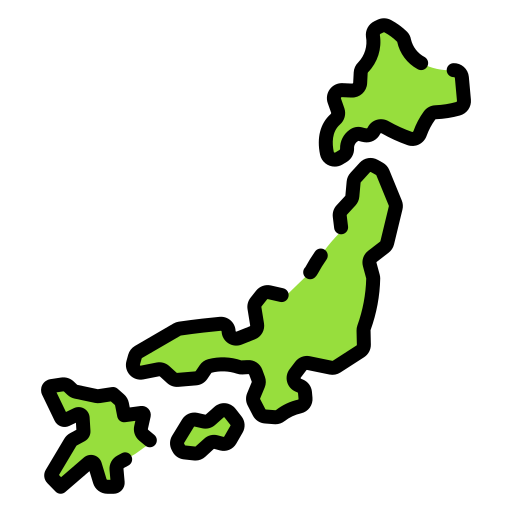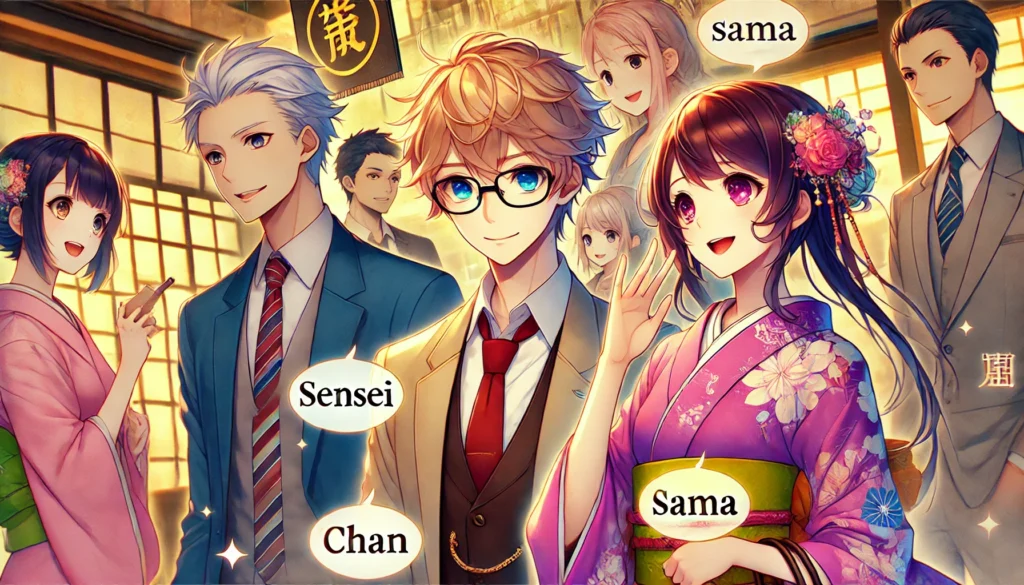Have you ever watched anime and wondered why characters keep adding “-san” or “-chan” to each other’s names? Or perhaps you’re planning a trip to Japan and want to avoid accidentally disrespecting someone? Japanese honorifics explained simply: they’re special titles added to names that reflect relationships, social standing, and levels of respect in Japanese society.
In Japan, using the correct honorific isn’t just polite—it’s essential for navigating social interactions. Unlike English, where we might occasionally use “Mr.” or “Mrs.,” Japanese culture embeds these respectful markers into everyday speech. Getting them wrong can create awkward situations or even cause offense.
In this comprehensive guide to Japanese honorifics explained, we’ll dive into these fascinating linguistic markers, exploring when to use each one, how they reflect Japanese cultural values, and practical examples to help you use them confidently in real conversations.
Want to start learning Japanese right away?
Access our Free Study Guides with grammar explanations, vocabulary lists, and study tips. All at no cost.
Why Understanding Japanese Honorifics Matters
Japanese society places enormous value on social harmony and showing proper respect. Honorifics aren’t merely decorative—they’re a fundamental aspect of communication that signals your understanding of social relationships and cultural norms.
For language learners, mastering Japanese honorifics offers several benefits:
- Demonstrates cultural awareness and respect
- Helps navigate complex social situations appropriately
- Prevents potentially embarrassing etiquette mistakes
- Deepens understanding of Japanese social structures
- Makes your Japanese sound more natural and fluent
As our language journey progresses, we’ll find that proper honorific usage opens doors to more meaningful connections with Japanese speakers, who often appreciate foreigners making the effort to understand this nuanced aspect of their culture.
The Most Common Japanese Honorifics Decoded
Let’s explore the most frequently used honorifics you’ll encounter in everyday Japanese conversations. Each carries its own nuance and appropriate usage contexts.
さん (-San): The All-Purpose Honorific
-San is the most versatile and commonly used honorific in Japanese. Think of it as roughly equivalent to “Mr.,” “Mrs.,” “Miss,” or “Ms.” in English—except it’s used much more frequently and is gender-neutral.
When to use -san:
- With people of similar age or status
- When addressing someone you’ve just met
- In professional or formal settings
- When referring to someone in the third person
Example in conversation: 「田中さんは、どこにいますか?」 Tanaka-san wa, doko ni imasu ka? “Where is Mr./Ms. Tanaka?”
Cultural note: Unlike Western titles, -san is used with both first and last names, though it’s more common with last names in formal settings.
さま (-Sama): The Honorific of High Respect
-Sama conveys a much higher level of respect than -san and indicates significant social distance or reverence. It elevates the person being addressed to a position of honor.
When to use -sama:
- When addressing customers (as a service provider)
- Referring to people of much higher status
- In very formal letters or emails
- When addressing deities or royalty
Example in conversation: 「お客様、こちらへどうぞ。」 Okyaku-sama, kochira e dōzo. “Dear customer, please come this way.”
Cultural note: Using -sama for yourself would be considered extremely arrogant and inappropriate.

くん (-Kun): The Masculine Casual Honorific
-Kun is typically used for boys and young men, or sometimes for women in a workplace setting by senior colleagues or managers.
When to use -kun:
- Addressing male friends or colleagues (especially younger)
- By teachers speaking to male students
- By seniors to junior male colleagues
- Sometimes for female employees in a professional setting
Example in conversation: 「山田くん、この資料を見てください。」 Yamada-kun, kono shiryō o mite kudasai. “Yamada, please look at these documents.”
Cultural note: While primarily masculine, the workplace use of -kun for women has increased as gender roles evolve in Japanese society.
ちゃん (-Chan): The Affectionate Diminutive
-Chan conveys affection and endearment. It has a cute and friendly nuance, often used for children, close friends, or within families.
When to use -chan:
- With children or babies
- Between close female friends
- For pets and cute animals
- With girlfriends/boyfriends or spouses (in some cases)
- For beloved family members
Example in conversation: 「まりちゃん、おはよう!」 Mari-chan, ohayō! “Good morning, Mari!”
Cultural note: Using -chan for someone you don’t know well can be seen as overly familiar or condescending.
せんせい (-Sensei): The Honorific for Professionals
-Sensei literally means “one who came before” and is used for professionals who have achieved mastery in their field.
When to use -sensei:
- For teachers and professors
- For doctors and medical professionals
- For lawyers and politicians
- For martial arts instructors
- For accomplished artists or writers
Example in conversation: 「佐藤先生、ご質問があります。」 Satō-sensei, go-shitsumon ga arimasu. “Dr./Teacher Sato, I have a question.”
Cultural note: Unlike other honorifics, sensei is often used alone without a name when directly addressing someone: “Sensei, could you explain this again?”
し (-Shi): The Formal Reference Honorific
-Shi is a somewhat formal honorific primarily used in writing or official contexts when referring to someone (not when addressing them directly).
When to use -shi:
- In formal documents or reports
- News broadcasts or articles
- Academic papers or presentations
- Business contexts when referring to someone outside your company
Example in usage: 「山本史氏は、この研究の先駆者です。」 Yamamoto-shi wa, kono kenkyū no senkusha desu. “Mr. Yamamoto is a pioneer in this research.”
Cultural note: This honorific is rarely used in day-to-day conversation but is common in newspapers and formal writing.
Japanese Honorific Prefixes: お (O-) and ご (Go-)
Beyond suffixes added to names, Japanese also uses honorific prefixes attached to nouns, verbs, and other words to show respect. The two most common are お (o-) and ご (go-).
When to use お (o-):
- Generally with native Japanese words (和語, wago)
- With certain status nouns like お母さん (okāsan, mother)
- With many everyday objects in polite speech: お水 (omizu, water)
When to use ご (go-):
- Generally with words of Chinese origin (漢語, kango)
- With certain formal nouns: ご家族 (go-kazoku, family)
- In set formal expressions: ご苦労様 (go-kurōsama, thank you for your hard work)
Example in conversation: 「お名前を教えていただけますか?」 O-namae o oshiete itadakemasu ka? “Could you please tell me your name?”
Cultural note: Using these prefixes appropriately significantly increases the politeness level of your speech and shows cultural awareness.

Common Mistakes to Avoid with Japanese Honorifics
Even Japanese learners with years of experience can stumble when it comes to honorific usage. Here are some common pitfalls to avoid:
1. Using Honorifics for Yourself
Perhaps the most fundamental rule: never use honorifics for yourself. Saying your own name with -san or -sama would be considered extremely arrogant.
Incorrect: 「私、田中さんです。」 (Watashi, Tanaka-san desu.) Correct: 「私は田中です。」 (Watashi wa Tanaka desu.)
2. Dropping Honorifics Too Soon
Removing an honorific (yobisute) before the relationship has developed to that level can seem presumptuous. Wait until explicitly invited to drop the honorific.
Cultural note: Being invited to use someone’s first name without an honorific is considered a sign of close friendship in Japan.
3. Mismatching Honorifics and Speech Levels
Using casual speech with formal honorifics or very formal speech with casual honorifics creates an unnatural, confusing impression.
Awkward: 「山田さま、何してる?」 (Yamada-sama, nani shiteru?) Better: 「山田さま、何をなさっていますか?」 (Yamada-sama, nani o nasatte imasu ka?)
4. Overusing -Sama
While it might seem safer to use the most respectful form, overusing -sama can create awkwardness by establishing too much distance.
Cultural note: In situations where you’re unsure, -san is almost always a safe default option.
Beyond Basic Honorifics: Specialized Terms
Japanese has several specialized honorific terms for specific relationships that go beyond the standard suffixes we’ve covered.
Family Honorifics
When referring to family members, Japanese uses special terms that already incorporate respect, such as:
- お父さん (otōsan) – father
- お姉さん (onēsan) – older sister
- お祖父さん (ojīsan) – grandfather
Example in conversation: 「お母さんはどこですか?」 Okāsan wa doko desu ka? “Where is (your) mother?”
Professional Titles as Honorifics
Some professional titles function as honorifics and replace -san or other suffixes:
- 社長 (shachō) – company president
- 部長 (buchō) – department head
- 課長 (kachō) – section chief
Example in conversation: 「田中社長に報告しました。」 Tanaka-shachō ni hōkoku shimashita. “I reported to President Tanaka.”
Love Japan? Stay in the Loop!
Hi, I’m Jesse! Join 100+ learners and get my best Japanese learning tips straight to your inbox.
Japanese Honorifics in Different Contexts
The appropriate honorific often changes depending on the social context. Let’s explore how honorifics function in various settings.
Honorifics in the Workplace
Japanese workplaces typically operate with clear hierarchical structures reflected in honorific usage:
- Superiors typically address subordinates using -kun or -san
- Subordinates almost always use -san or title+san when addressing superiors
- Colleagues of equal rank typically use -san with each other
Example in conversation: 「佐藤部長、会議の準備ができました。」 Satō-buchō, kaigi no junbi ga dekimashita. “Department Head Sato, the meeting preparations are complete.”
Honorifics in School Settings
Educational environments have their own patterns of honorific usage:
- Students address teachers as -sensei
- Teachers call students by last name + -kun (for boys) or -san (for girls)
- Students typically use -san with classmates
Example in conversation: 「中村先生、質問があります。」 Nakamura-sensei, shitsumon ga arimasu. “Teacher Nakamura, I have a question.”
Honorifics in Family and Friend Groups
Among family and friends, the rules become more flexible:
- Siblings might use no honorifics or use -chan for younger siblings
- Friends often use -chan or -kun based on gender and closeness
- Grandparents might be addressed with special terms like おばあちゃん (obāchan)
Example in conversation: 「ともちゃん、明日映画に行こう!」 Tomo-chan, ashita eiga ni ikō! “Tomo, let’s go to the movies tomorrow!”
Japanese Honorifics and Keigo (Polite Language)
Honorifics are just one aspect of Japan’s broader system of polite language, known as keigo (敬語). To truly master respectful communication, it’s important to understand how honorifics work alongside these different speech levels.
The Three Levels of Keigo
- Teineigo (丁寧語) – Polite language used in everyday situations
- Sonkeigo (尊敬語) – Respectful language that elevates the listener
- Kenjōgo (謙譲語) – Humble language that lowers oneself
Example in different keigo levels:
- Casual: 「これを食べる」 (Kore o taberu) – “I’ll eat this”
- Teineigo: 「これを食べます」 (Kore o tabemasu) – “I will eat this”
- Sonkeigo: 「これをお召し上がりになります」 (Kore o omeshiagari ni narimasu) – “You will partake of this”
- Kenjōgo: 「これをいただきます」 (Kore o itadakimasu) – “I will humbly receive this”
For more on Japanese grammatical structures, check out our JLPT N5 Kanji Cheat Sheet which introduces key characters needed for basic language comprehension.

Regional Variations in Honorific Usage
While the basic honorifics are used throughout Japan, there are some interesting regional differences:
- In Kansai (especially Osaka), people might use -han instead of -san
- In some rural areas, -dono (an old-fashioned, very respectful honorific) may still be heard
- In Okinawa, local dialects sometimes incorporate unique honorific expressions
This regional diversity reflects the rich linguistic tapestry of Japan, similar to what we explored in our Japanese Reptiles and Amphibians guide, where we discovered how different Japanese regions have unique names for native wildlife.
Honorifics in Japanese Popular Culture
Anime, manga, and Japanese video games often use honorifics as a storytelling device to show character relationships:
- A character suddenly switching from -san to -kun might indicate growing closeness
- Using no honorific dramatically (dropping honorifics) can be a significant emotional moment
- Villains might deliberately use incorrect or mocking honorifics
For language learners, paying attention to honorifics in Japanese media can provide valuable context clues about interpersonal dynamics.
Practical Tips for Mastering Japanese Honorifics
Learning to use honorifics naturally takes practice, but these strategies can help accelerate your progress:
1. Listen Carefully to Native Speakers
Pay attention to how Japanese people address each other in different contexts. Note patterns of when certain honorifics are used and by whom.
2. Err on the Side of More Formal
When in doubt, it’s safer to be slightly too formal than too casual. You can always adjust based on feedback.
3. Practice with Role-Playing
Imagine different scenarios (meeting a teacher, talking to a friend’s parent, etc.) and practice the appropriate honorific usage.
4. Ask for Feedback
Japanese people are usually happy to help learners with cultural nuances. Don’t be afraid to ask if you’re using honorifics correctly.
5. Study Set Phrases
Learn common expressions with their appropriate honorifics as set phrases until they become automatic.
For more practice with essential Japanese phrases, check out our 100+ Essential Japanese Phrases guide, which includes many examples with proper honorific usage.
Japanese Honorifics Compared to Other Languages
While many languages have systems of honorifics or politeness markers, Japanese stands out for its complexity and pervasiveness:
- Korean has a similar system with honorific particles and speech levels
- Thai uses different pronouns and vocabulary based on social status
- Hindi distinguishes between formal and informal “you” forms
However, few languages integrate respect markers as thoroughly into everyday speech as Japanese does. This reflects Japan’s historical emphasis on social harmony and clear understanding of hierarchical relationships.
Japanese Honorifics in the Modern Age
Like many language features, honorific usage is evolving in contemporary Japan:
- Young people sometimes use honorifics more flexibly than previous generations
- Some workplaces are moving toward less hierarchical communication styles
- International influence has led to some contexts where honorifics are less emphasized
However, even in modern Japan, understanding basic honorific usage remains essential for effective communication, much like knowing how to count is fundamental (as we cover in our Counting to 100 in Japanese guide).
Learning Japanese Honorifics as a Non-Native Speaker
For many language learners, honorifics present a particular challenge because they reflect cultural values that might differ from their own. However, this aspect of Japanese offers valuable insights into the society:
- Focus on understanding the purpose behind the system rather than just memorizing rules
- Recognize that honorifics reflect a cultural emphasis on group harmony and clear social relationships
- Remember that even small mistakes in honorific usage are usually forgiven for non-native speakers who are making an effort
The effort to learn honorifics demonstrates respect for Japanese culture, similar to how learning about Japanese Sea Creatures and their cultural significance shows appreciation for Japan’s deep connection to nature.

FAQ: Japanese Honorifics Explained
What is the most common Japanese honorific?
The most common Japanese honorific is -san (さん). This versatile honorific is gender-neutral and can be used in most social situations when addressing or referring to someone with basic politeness.
When should I use -sama instead of -san?
Use -sama (さま) when you need to show a much higher level of respect than -san provides. Common situations include addressing customers (as a service provider), referring to people of significantly higher status, or in very formal written communication.
Can I use -chan for anyone I find cute?
No, -chan (ちゃん) should only be used for people with whom you have a close, familiar relationship. Using it for someone you’ve just met or in a professional context would be considered inappropriate and potentially offensive.
How do I know when to drop honorifics with someone?
Wait until the person explicitly suggests dropping the honorific or uses your name without an honorific first. This usually indicates they’re comfortable with a more casual relationship. In Japanese culture, dropping honorifics too soon can be seen as presumptuous.
Do Japanese people use honorifics when speaking English?
Japanese people sometimes carry over honorific habits when speaking English, occasionally adding -san after names. However, most understand that English doesn’t use the same honorific system and adapt accordingly.
Conclusion: The Art of Japanese Honorifics Explained
Mastering Japanese honorifics explained in this guide is about more than just adding the right suffix to someone’s name—it’s about developing cultural awareness and communicating respect appropriately in different contexts.
While the system might seem complex at first, with practice, using the proper honorifics becomes second nature. The key is understanding that these linguistic markers reflect deeper cultural values of social harmony, clear hierarchical relationships, and mutual respect.
As you continue your Japanese language journey, pay attention to honorific usage in conversations, media, and different social contexts. This attentiveness will not only improve your language skills but also deepen your understanding of Japanese society and interpersonal dynamics.
Ready to expand your Japanese language skills beyond honorifics? Explore our Hiragana & Katakana Cheat Sheet to master the fundamental writing systems that form the foundation of Japanese literacy.
What aspect of Japanese honorifics do you find most challenging or interesting? Let us know in the comments below!
Note: This guide covers the most common aspects of Japanese honorifics, but as with any language feature, there are regional variations and exceptions. When in doubt, observing native speakers and asking for guidance is always the best approach.
Connect with Fellow Japanese Learners!
Ask questions, get study tips, and take part in weekly challenges. Join a community of motivated learners exploring both the language and culture of Japan!




